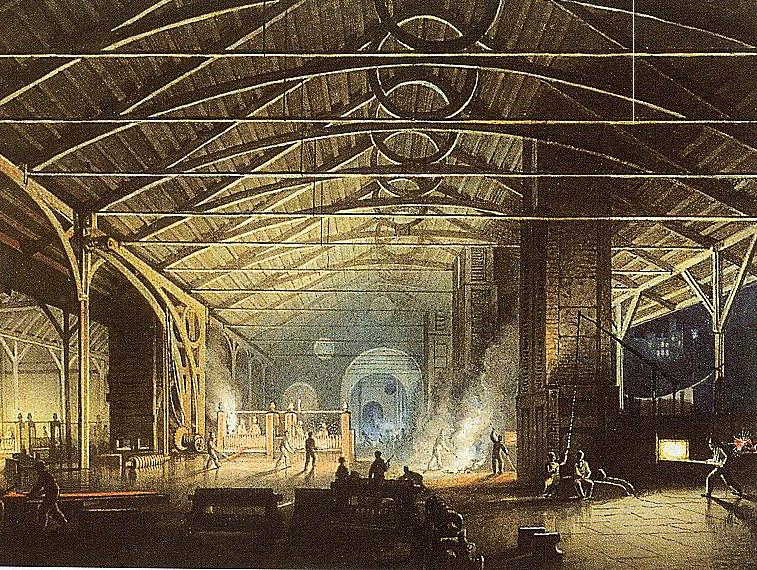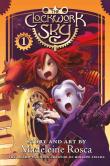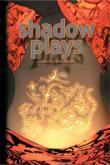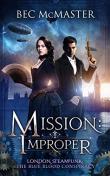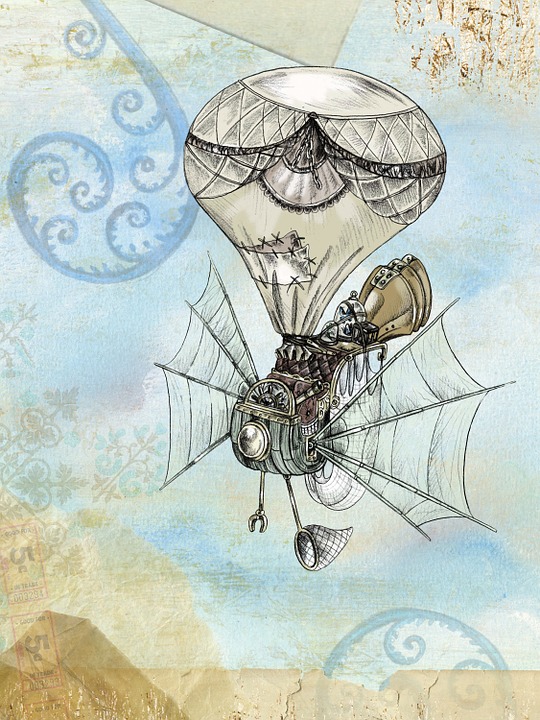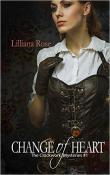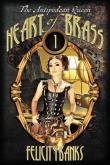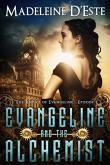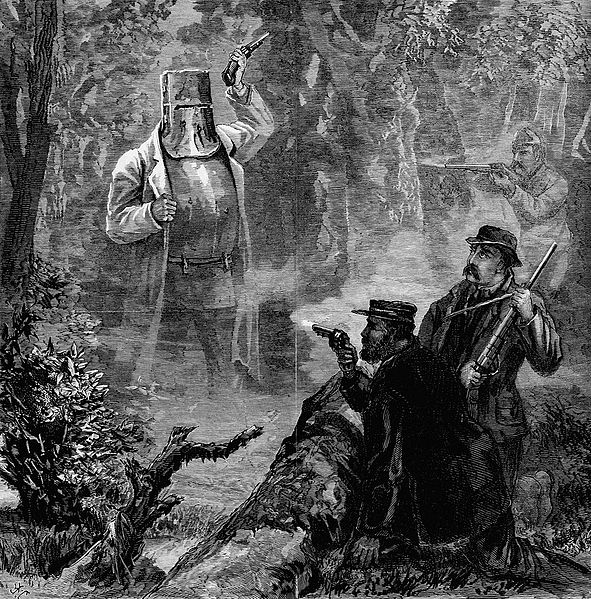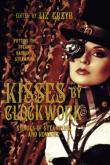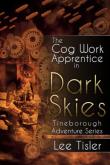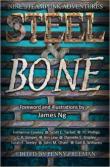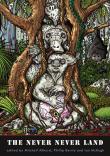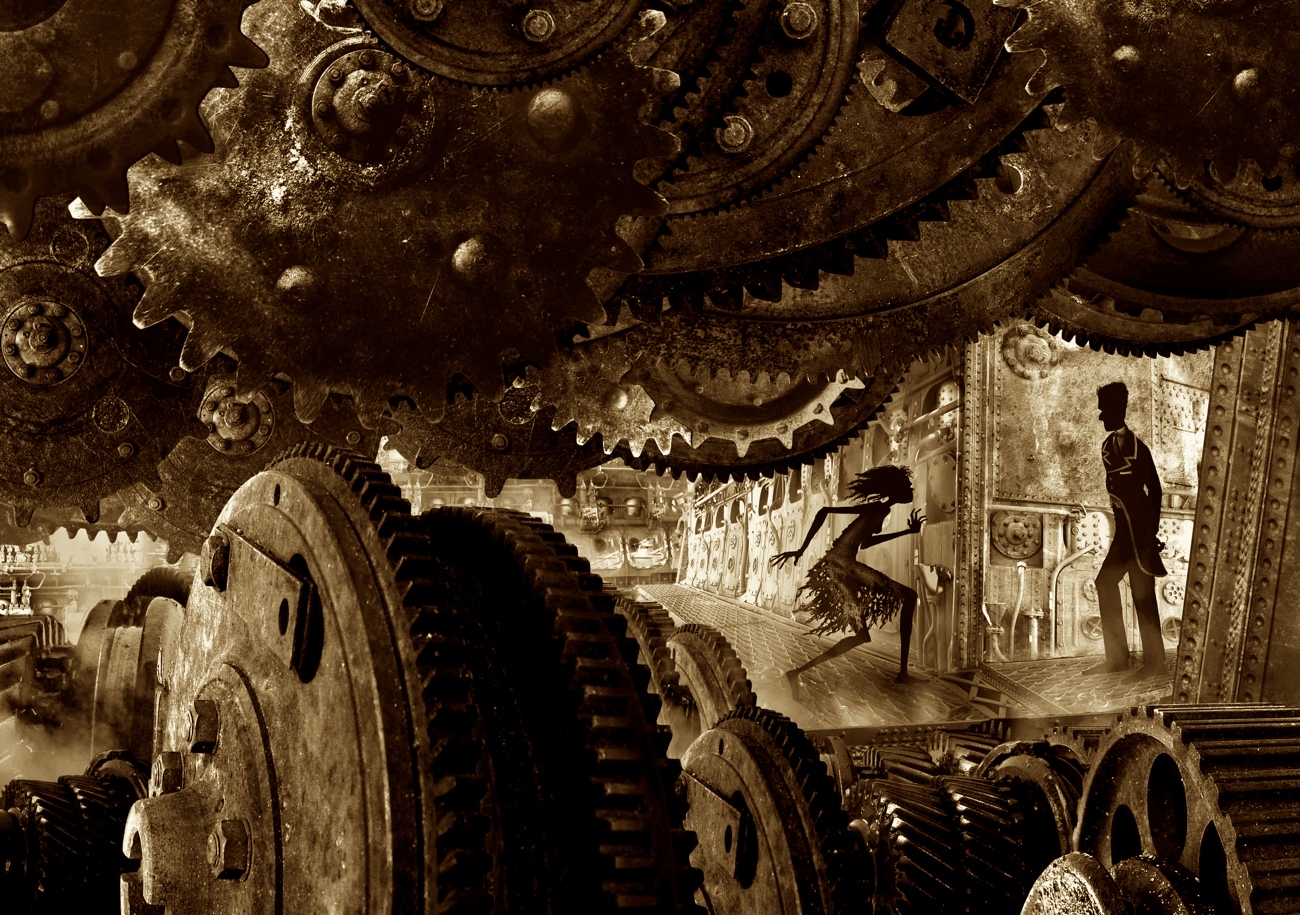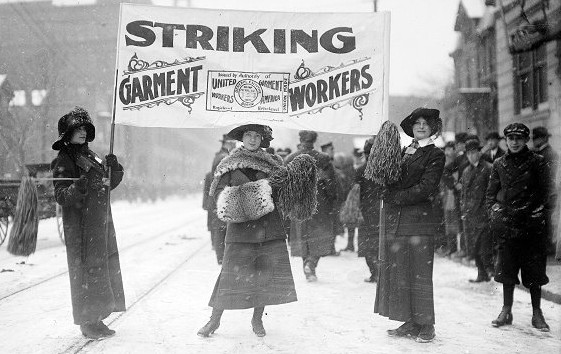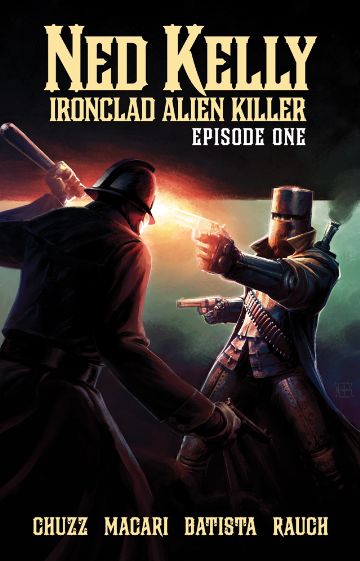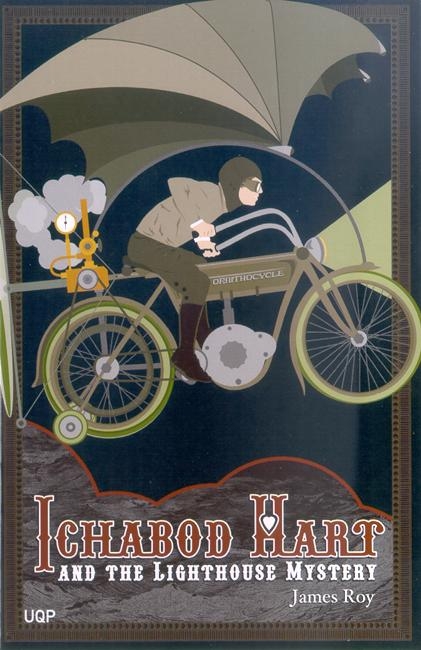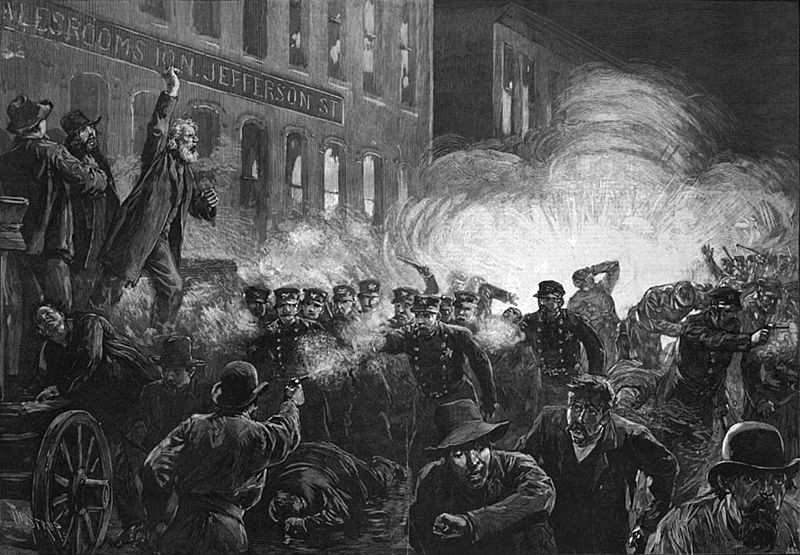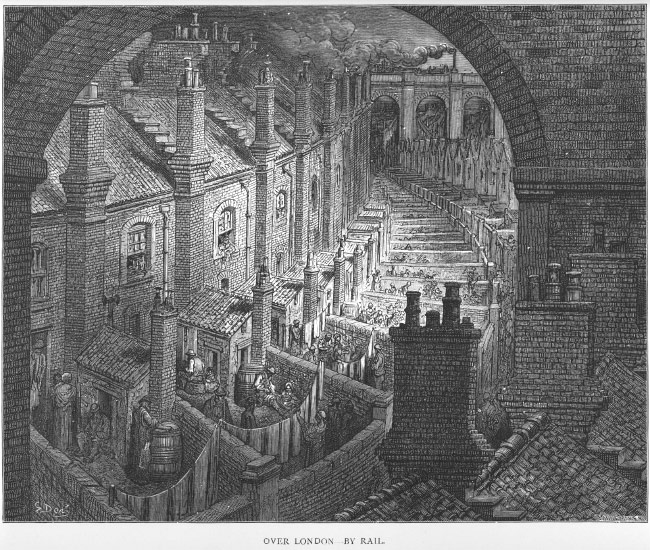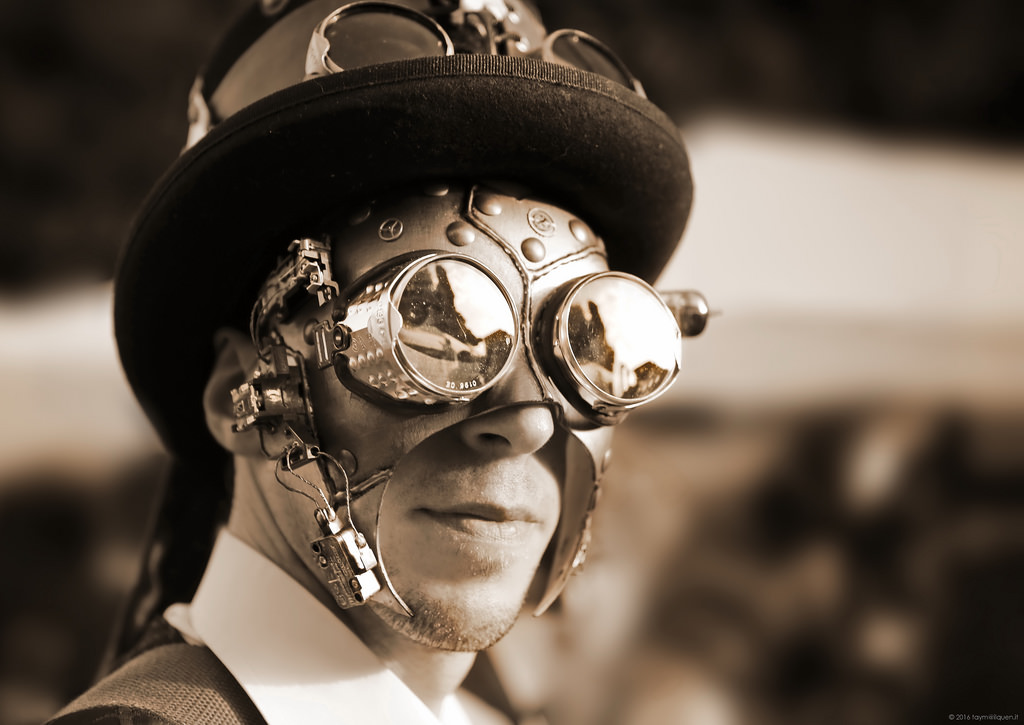AustLit
-
-
-
Though certainly not common to all works of steampunk (and often absent from the less 'punk' works that have become emblematic of the second-wave), class or political struggle are recurring themes in many steampunk works from The Difference Engine on. This political angle most often emerges out of the intersection of steampunk's historical and technological concerns, wherein clockwork automation, rapidly advancing technologies, and the class disparities of Victorian societies act as catalysts for social upheaval.
-
Perhaps the most overt example of this in the Australian milieu is Richard Harland's Worldshaker and Liberator novels, in which a vast steampunk ship serves as the setting for a violent class struggle between the wealthy elites and the 'Filthies' who toil on the lower decks beneath them. The importance of the Victorian era's factory conditions and subsequent labour movements is a significant touchstone for these works, serving as the culturally resonant foundation supporting the narrative.
The addition of steampunk features such as advanced mechanical technologies serves to further emphasise the importance of the changing nature of society's productive systems. This foregrounds the ever-important role of technological advancement and expansion in shaping the material conditions of the lower classes.
Yet steampunk's political focus is far from being oriented exclusively or even largely towards labour movements or class struggle. Once again, The Difference Engine's role as progenitor is both instructive and telling, serving as something of a single-text confluence of steampunk's multiple political persuasions. While the novel includes a meritocratic capitalist revolution and a communist uprising in the United Kingdom, it treats both of these with something of the lens of the conservative nineteenth-century perspective, viewing agitators as reprehensible, and venerating the semi-royal status of the Byron family in a misguided damsel-in-distress plot that is only partially critiqued by the text.
-
Despite this somewhat confused confluence of political perspectives, it is possible to identify that steampunk operates on generally anti-authoritarian scales, whether this be the class-oriented struggle of works like Worldshaker, or the focus on more individual liberation evident in many second-wave texts, including The Antics of Evangeline or The Clockwork Mysteries. This second mode often intersects with concerns of women's liberation, in which women leverage steampunk technology to gain independence and freedom. The politics here (which find much resonance with the culture and craft movement) focus on individual liberation from hegemonic structures and corporate, government, or family control – often ignoring the larger social context of these issues.
Nevertheless, even when class is not viewed in terms of struggle or oppression, it remains a significant part of steampunk.
The least critical of steampunk works engage a retroactive fondness for Victorian aristocracy and business, fetishising the romance of the high Victorian drawing-room cultural legacy. The liberation and freedom of the protagonists of these works is often the liberation of the wealthy – a gaining of independence and empowerment through owning and running a business.
Similarly, the feminism of some of these works is largely not an intersectional one, often focusing (as much of the suffragette movement of the time did) almost exclusively on the liberation of wealthy white women. For example, the protagonist of Jenny Schwartz's Wanted: One Scoundrel is a wealthy heiress in search of a man willing to argue her political views in the men-only upper-class clubs where the higher echelons of Australian society socialise. The class issues that are inherently bound up in issues of gender equality are largely left by the wayside, in favour of an appeal to the wealthy.
-
The bushranger also features prominently in Australian steampunk, being a recognisably Australian figure strongly associated with the iconography of the era. The Ned Kelly: Ironclad Alien-Killer series of comics details a fictionalised version of the infamous bushranger, re-imagined as an alien-hunting freedom-fighter, and his nemesis, Redmond Barry (in real life, the judge who hanged him, but here, an alien overlord). It plays strongly to the Australian myth of the bushranger as a figure in the vein of Robin Hood, standing up to authority-figures in a narrative that draws on both dystopian sci-fi and the mythology of the American Wild West.
There is an affinity here between the mythologised anti-authoritarianism of the Australian colonial larrikin and the freedom-venerating narrative of many steampunk texts.
Other works, such as Lee William Tisler’s The Cog Work Apprentice in Dark Skies, or James Roy’s Ichabod Hart and the Lighthouse Mystery present the lower classes of nineteenth-century Australia, including characters of miners, bushrangers, and convicts, interspersed with the mechanical and anachronistic tropes expected of steampunk.
-
Ichabod Hart and the Lighthouse Mystery continues in a vein that exists elsewhere across steampunk fiction, utilizing the mechanisation of the human body by representing the convicts as cyborgs.
This trope is often used in the bodies of the wretched or the outcast, as a representation of oppressive structures, or as a warning against increasing technological control over human life, or the dehumanizing effect of the replacement of working-class labour with machines.
While some works do depict working-class protagonists, many steampunk texts are written from the perspective of wealthy characters, who can afford through money and time to occupy the stock-character roles of tinkerer, professor, inventor, or investigator.
Bustlepunk romances set in Australia’s major cities most often enact this romantic view of upper-class professionals and socialites, engaging a nostalgia for the perceived sophistication and refinement of manners associated with high-society Victorianism. The technological advancements and prosperity associated with the burgeoning of industrial development are seen as the rightful preserve of these owner-tinkerers, whose innovation and nobility of manners serves to elevate them in the text.
-
Indeed, steampunk texts may often imagine a world in which an entire industry’s workers have been replaced by clockwork automatons, or rank-and-file soldiery have been supplanted by steam-driven mechanicals.
Rarely is the question asked of these as to what happens to the workers, the servants, the underlings, whose livelihoods have been demolished by the onward advance of technological innovation.
There are a few notable exceptions, of course, including Stephanie Lai’s short story 'The Last Rickshaw' or the two volumes of Madeleine Rosca’s The Clockwork Sky. Both stories deal with, to varying degrees, the politics of automation and the problems faced by workers whose jobs are subsumed into the purview of the machine.
-
Steampunk’s strong association with urban space also brings it into close proximity with class issues. The Victorian London that is the archetype for many steampunk cities was a city of slums, overcrowding, and stark divides in wealth and poverty. It is no surprise, then, that many works reflect this interest, often affecting an urban world of slums and palaces, overcrowded undercities, and rampant crime. This often takes the form of a divided world, where a city above and a city below each actualise in physical space the social, political, and economic divides of steampunk industrialisation.
The clearly demarcated battle-lines allow for a Manichean struggle of good versus evil, or a struggle in the vein of the dialectical materialism of Marx, whereby the sharp divides allow for the generation of fused-groups of individuals united in common cause (Sartre 347-349).
Richard Harland’s Worldshaker is probably the clearest example of this in the Australian oeuvre, wherein the sharp divides in the city-ship’s urban space allows for the actualisation of class struggle. In fact, this metaphor can extend further: for example, Erica Hayes's 'Crystal and Iron' hinges on a divide between a dull grey 'Old London' and a bright copper-and-iron 'New London.' This concern of a break between and unification of the old and the new, the transformative potential of industrialisation and technological advancement, is perhaps the central concern of steampunk, and the conceit of the two cities invites the question of who gets to live in each? Who is elevated by the ascendancy of technology, and who is kept in the dark, in the slums by its inexorable advance?
Whether steampunk texts address these questions explicitly or not, they remain beneath the surface, even in works where it is not technology but magic that drives the world.
-
Even outside the fiction, steampunk culture is deeply entangled in class issues. In a similar way to many bustlepunk texts, the corsetry and costuming of the arts and crafts side of steampunk often recreates the fashions and affectations of the upper-class of Victorian society.
Most commonly, nostalgia is reserved for the mythologised Victorian gentleman or lady, the costumes re-enacting a fondness for memories of an imagined time when high-bourgeois culture reigned supreme.
The allure of upper-class sophistication is a potent force – it is difficult to want to appear as a factory-worker when you can dress as its owner instead.
In re-enacting the identities of the Victorian elite, there is a danger that practitioners may (in a fashion reminiscent of Plato’s denunciation of mimesis) recuperate and absorb the imperialism, class-elitism, or social Darwinism that was prominent in Victorian high culture. As Kristin Stimpson argues, steampunk fashion can, if approached uncritically and without the proper historical awareness, serve to 'perpetuate a rhetoric of empire', and by extension, all the rigid hierarchical class structures that go along with it (34).
-
This is not to say by any means that steampunk culture is homogenous in its approach, and there are many examples of practitioners actively questioning and offering alternatives to a romanticisation of aristocratic imperialism.
Sites such as Jaymee Goh’s Silver Goggles and Diana Pho's Beyond Victoriana work to open up the discourse of steampunk through a postcolonial lens, highlighting examples of steampunk that breaks with the inherited elitism and imperialism of Victorian culture (Pho 36).
Though it may be impossible to disentangle steampunk from class issues due to the associated baggage of its historical, technological and cultural themes, there is no single definitive political bent associated with the style. Certainly, the originary 'punk' of the style bears associations of anti-authoritarianism and resistance, but through the expansion and aestheticisation of the style, this aspect is no longer essential. Rather what we have is an array of differing approaches and implicit assumptions regarding class constantly proliferating across the style, to a lesser or greater extent expressing an understanding of steampunk's punkish and class-related themes.
You might be interested in...


